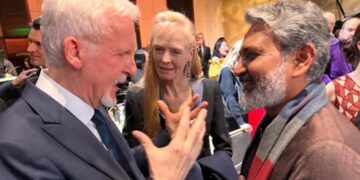By Santosh Mehrotra
Discussions on poverty in India have long centred on the Household Consumption Expenditure Surveys (HCES) which are conducted nationwide. These surveys measure how much households spend and are often used as a stand-in for household income since reliable income data is hard to collect in developing countries.
However, after 2011-12, there was a long gap in these surveys which left a void in official data. As a result, researchers began relying on other surveys or constructed synthetic estimates of household spending. Unsurprisingly, these efforts tended to reflect the researchers’ existing perspectives.
Notable examples include the work of Surjit Bhalla et al. (2022, IMF Working Paper) and Roy Sinha and Der Weide (World Bank, 2022).
When the HCES for 2022–23 and 2023–24 were finally released by the National Statistical Organisation, many commentators claimed that poverty in India was now almost eliminated.
However, these claims ignore major changes in methodology in the two surveys, as compared to the 2011–12 round.
Why the new and old data aren’t comparable
One of the most important differences between the surveys is the “recall period” — the timeframe households are asked to report their spending for. Shorter recall periods tend to improve accuracy, as people can better recall what they spent on recently. The survey was divided into three questionnaires: one for food items, one for consumables and services, and one for durable goods. Each household received a visit for each questionnaire, spaced out over three months.
In the older surveys, data was collected on multiple items in a single visit. The new surveys, by contrast, involve three monthly visits, each focused on a subset of spending categories. Past studies have shown that collecting the data in different visits significantly improves reporting. This method is proven to reduce recall errors and give a more complete picture of household expenditure.
The new surveys also include the value of “freebies” like subsidised food or free LPG cylinders by estimating their market value and adding it to household consumption.
Both these changes are expected to capture the expenditure data much better and lead to higher consumption expenditure distributions.
Due to these changes, the data from 2022–23 and 2023–24 cannot be directly compared with 2011–12. Unfortunately, there is no correction factor available to bridge the two.
Existing poverty lines are outdated
India currently uses two poverty lines to estimate poverty: the Tendulkar line of 2009, which counted those living on less than Rs 33 a day in urban areas and Rs 27 a day in rural areas as being below the poverty line, and the Rangarajan Committee line of 2014, which put the corresponding figures at Rs 47 and Rs 32 respectively. Both used the old consumption data of 2011-12.
Some analysts try to “update” the old poverty lines using price indices to adjust for inflation. But simply adjusting for prices is not enough.
There is also the matter of measuring calorific intakes that help assess poverty by determining the minimum calories needed for a healthy and active life and then comparing it to what individuals or households can afford.
The NC Saxena Committee on Below Poverty Line households (which this author was part of) found that in 1999–2000, the cost of meeting the minimum calorie requirement should have been Rs 565 per person per month in rural areas and Rs 628 per person per month in urban areas, based on actual data. But the official poverty lines, updated only for inflation, were much lower: Rs 328 and Rs 454. The head-count ratio of rural poverty (27.4 per cent) is higher than the head-count ratio of urban poverty (23.7 per cent), which shows that?
This underestimated poverty levels, and the same mistake risks being repeated today.
A recent study in the Review of Agrarian Studies also shows that the Rangarajan poverty line, when applied to the new 2022–23 HCES data, leads to similarly misleading conclusions.
Poverty is falling but mind the hype
There is clear evidence that poverty has declined in India. But overstating the extent of this fall by ignoring the limits of the new data goes against sound research.
This issue applies not only to official statistics, but also to the Multi-Dimensional Poverty Index published by NITI Aayog, which also claims steep reductions in poverty without accounting for data comparability issues.
Likewise, some claims about the narrowing gap between rural and urban poverty overlook the fact that India hasn’t conducted a new population census since 2011, so our classification of what counts as “rural” or “urban” is also outdated.
Both recent poverty estimates—from the World Bank’s 2025 update, Rangarajan and Mahendra Dev—fail to account for these methodological changes.
But the issue is not just about methods. It’s also about substantive changes in the economy and people’s lives.
Why a dramatic fall in poverty is unlikely
There is hard evidence that poverty fell very sharply between 2004 and 2014. While poverty likely continued to decline after 2015, the pace of reduction has been much slower than between 2004 -2014. The reasons are both economic and structural.
The first reason is the difference in GDP growth rates between the two periods.
Between 2004 and 2014, India’s GDP growth was rapid, thanks to rising savings and investment rates, which were driven by the country’s young population entering the workforce—a phase known as the demographic dividend, which had set in in the early 1980s. Rising savings/GDP ratio (and a corresponding growth in the investment to GDP rate) was the basis for the ensuing rise in the GDP growth rate.
By 2003–04, savings had reached 23 percent of GDP, and investment had shot up to 24 percent. Smart macroeconomic policies helped push investment to as high as 38 percent of GDP between 2004–14 —India’s best performance ever. This can be seen from the Ministry of Finance’s Economic Surveys.
In contrast, between 2014 and 2024, GDP growth slowed to 5.8 percent annually, and investment fell to between 26 percent and 32 percent, mainly due to a drop in savings.
Second, the pattern of growth has varied.
Earlier growth was broad-based, covering both the formal (organised) and informal (unorganised) sectors. All engines of demand—government spending, consumption, exports, and investment—were working.
As a result, non-farm jobs grew by 7.5 million per year, an unprecedented rate.
Except agriculture where the number of workers fell (a good thing), all sectors generated jobs, especially construction (at least 26 million new jobs) and manufacturing (at least 8 million).
In contrast, after 2016, a series of policy shocks such as demonetisation, a poorly implemented GST, and harsh COVID lockdowns hurt the informal and MSME sectors the most, causing widespread job losses.
Third, there is a real difference in the growth between the two periods.
After 2004, India saw a decline in the number of people working in agriculture —a historic shift—because non-farm job growth was strong. However, after 2020, the trend reversed: about 80 million workers moved back to agriculture, partly due to reverse migration following job losses in towns and cities during the pandemic. This is the author’s estimate from NSS and Period Labour Force Survey data.
Fourth, the new non-farm jobs and tightening rural labour market raised real wages (adjusted for inflation), which kept rising until 2015. Rising wages boosted consumption of everyday goods, and, for the first time in India’s history, the absolute number of poor people fell. Although the poverty rate had been falling since the 1970s, this period from 2004-12 was the first time the total number of poor people actually declined—in large part due to job-led growth.
None of these gains were sustained after 2015. Growth slowed, the pattern of growth became ‘K-shaped’ and more unequal; non-farm job growth fell, and hence, real wages stagnated. While poverty may have continued to decline after 2015, we simply don’t know by how much.
Until India updates its poverty lines and fully accounts for changes in data collection, any claims of poverty eradication must be taken with caution.
Santosh Mehrotra is Visiting Professor, Centre for Development Studies, University of Bath, UK and ex-Professor of Economics and Chair of the Centre for Informal Sector and Labour, Jawaharlal Nehru University, New Delhi. This article uses data from his forthcoming book, India Out of Work, to be published by Bloomsbury, London, later this year.
P. Mohanan, former acting Chairman of the National Statistical Commission, and currently Chair, Kerala Statistical Commission, Trivandrum, contributed to this article.
Originally published under Creative Commons Attribution 4.0 by 360info™.















